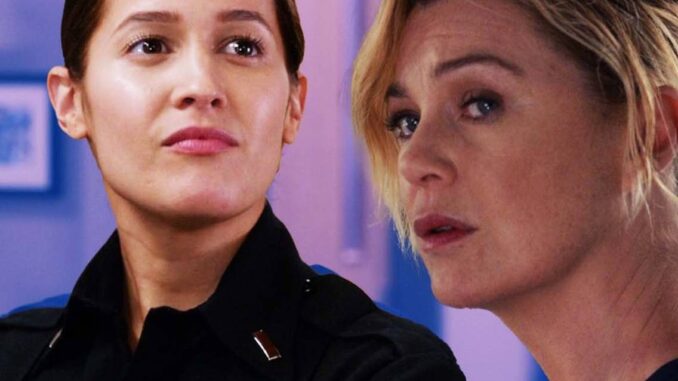
The Blurring Lines: How Grey's Anatomy and Station 19 Crossovers Transformed Both Series Forever
The fictional universe of Grey Sloan Memorial Hospital and Station 19 firehouse operates on a seemingly constant state of emergency. While both shows were individually compelling, it was the deliberate and increasing integration through crossover episodes that fundamentally transformed them, creating a richer, more complex narrative tapestry where personal and professional lives intertwined with the heat of a five-alarm fire and the precision of a life-saving surgery. These crossovers, while initially sporadic, evolved into crucial narrative pillars, irrevocably altering character arcs, escalating stakes, and solidifying a shared world with consequences reverberating through both series.
Initially, the crossovers were largely superficial. A patient injured in a fire would be rushed to Grey Sloan, or a doctor would need assistance from the fire department during a medical emergency. These early interactions, while entertaining, felt like thematic nods, a way to acknowledge the shared location of Seattle and the inherent drama of emergency services. The impact was minimal, more like a brief guest appearance than a genuine integration of storylines. Meredith Grey might treat a firefighter with burns, but the encounter wouldn't significantly alter her path, nor would it deeply affect the trajectory of Andy Herrera's leadership at Station 19.
However, as the writers became more ambitious, the crossovers began to delve deeper into the personal lives of the characters. Romances blossomed between doctors and firefighters, blurring the lines between professional colleagues and potential partners. For instance, the relationship between Ben Warren, a former surgeon turned firefighter, and Miranda Bailey, the Chief of Surgery, served as a constant bridge between the two worlds. Their personal struggles, like Ben’s anxieties about his new career and Bailey’s health scares, played out across both shows, forcing viewers to invest in both narratives to fully grasp their story. This interweaving of personal dramas allowed for a more holistic understanding of the characters, revealing vulnerabilities and complexities that wouldn't be apparent in isolated storylines.
Furthermore, the crossovers significantly amplified the stakes for both shows. A seemingly routine fire could trigger a catastrophic hospital event, requiring both the medical and fire personnel to work in tandem under immense pressure. Characters faced impossible choices, forced to prioritize lives and confront their own mortality. The devastating wildfire that threatened Seattle, for example, served as a pivotal moment, pushing the characters to their limits and forging unbreakable bonds. This shared trauma created a sense of camaraderie and mutual respect, reinforcing the idea that they were all part of a larger, interconnected community.
The crossover episodes also allowed for exploration of themes that might not have been possible within the confines of a single show. Issues like PTSD, addiction, and the ethical dilemmas faced by first responders were explored with greater nuance and depth. Seeing firefighters grapple with the emotional toll of their job, and then watching doctors struggle to save lives in the aftermath, provided a more comprehensive understanding of the challenges faced by those on the front lines. This holistic perspective fostered a deeper appreciation for the sacrifices made by these essential workers.
However, the integration of the two shows wasn't without its drawbacks. At times, viewers who only watched one series felt lost or confused by the plot developments that unfolded across both shows. The constant requirement to follow multiple storylines could be overwhelming, and the narrative momentum of individual episodes sometimes suffered as a result. Furthermore, the sheer number of characters involved in the intertwined narratives made it difficult to fully invest in every storyline.
Despite these challenges, the crossover episodes between Grey's Anatomy and Station 19 ultimately enriched both series in profound ways. They transformed the shows from individual dramas into a complex, interconnected universe where the personal and professional collided, and the stakes were always life and death. The blurring of lines between the hospital and the firehouse created a more authentic and compelling portrayal of the challenges and triumphs of emergency responders in Seattle, forever solidifying their place as a unique and enduring force in television. The shared narratives, the blossoming romances, the collective traumas – all contributed to a more vibrant and impactful storytelling experience, proving that sometimes, the greatest transformations come from the unexpected intersection of two worlds.
